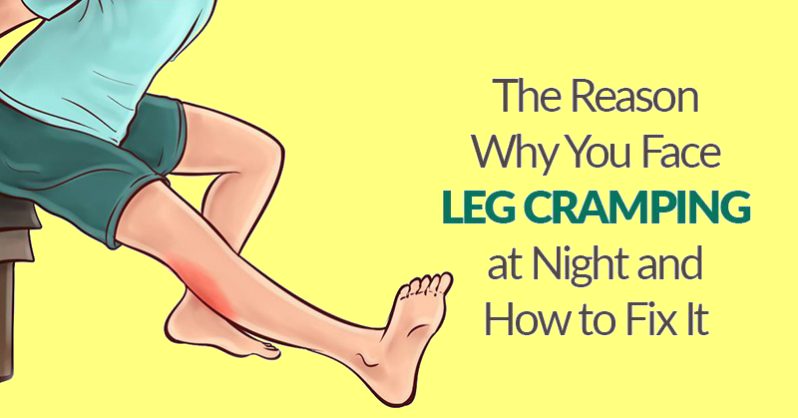Leg cramps which occur at night, also known as nocturnal leg cramps, are pains which occur overnight when the person sleeps. These pains are a result of the prolonged hours of inactivity and can be so bad that the person is basically forced to wake up. Even though the pain mostly occurs in the calf, the thighs and feet can be also affected.
It usually lasts for a couple of seconds to a few minutes. Once the cramp goes away, the muscle soreness may remain for the next few hours or until the morning. Nocturnal leg cramps affect both men and women and people over the age of 50 are most susceptible to this issue.
Leg Cramps at Night VS Restless Leg Syndrome
The only thing nocturnal leg cramps and restless leg syndrome have in common is the fact that they both occur during sleeping hours. However, there are many differences between them, including the following:
- RLS causes the desire to move the legs, while nocturnal leg cramps often prevent movement.
- Moving the leg in RLS offers relief – moving the leg in nocturnal leg cramps does not, instead stretching is required.
- RLS does not cause pain or cramping, while nocturnal leg cramps do.
- RLS is more of a discomfort or crawling feeling in your legs.
Causes and Risk Factors of Leg Cramps at Night
Even though the real cause of nocturnal leg cramps is not fully understood, the potential causes and risk factors are already known. Among them are:
- Standing or working on concrete floor
- Sitting improperly
- Sitting for prolonged periods of time
- Overexertion of the muscles in the leg
Leg cramps at night can be caused by medical conditions as well, such as:
- Neuromuscular disorders
- Structural disorders like flat feet
- Endocrine disorders like diabetes
- Diuretics, statins, beta agonists
- Pregnancy
- Alcoholism
- Dehydration
- Parkinson’s disease
Treatment and Prevention for Nocturnal Leg Cramps
The treatment itself heavily depends on the underlying cause. For instance, if dehydration is the cause of your nocturnal keg cramps, you need to make sure that you stay hydrated during the day. Other preventive measures and treatments include the following:
- Stretch your legs prior to bed.
- Partake in water exercises to build leg muscles.
- Wear ergonomic shoes and avoid high heels.
- Use horse chestnut, which has been shown to increase blood flow to the legs.
- Take a relaxing, warm bath prior sleeping to ease any muscle tightness.
- Apply a heating pad to the affected area.
- Try acupuncture treatment to loosen tight leg muscles.
- Ensure you are not deficient in magnesium or potassium – deficiencies in both minerals are linked to muscle cramping.
How to React When Cramps Occur?
Once the leg cramp strikes, the person is nearly left paralyzed. Therefore, it is very important to know how to react so that you get an instant relief and feel less sore afterwards. Consider the following tips:
- Gently massage the area in a circular motion.
- Ensure blankets and sheets are not tight enough to make the leg muscle contract.
- Take a tablespoon of yellow mustard to relieve discomfort.
- While sitting on the floor extend both legs out in front of you. Now flex your feet at the ankles and point your toes toward your knees – you may want to tug on your feet to offer an even better stretch.
- Get up slowly and walk around a bit – shaking your legs can also improve blood flow.
Sources:
http://www.webmd.com/sleep-disorders/tc/nighttime-leg-cramps-topic-overview#1
